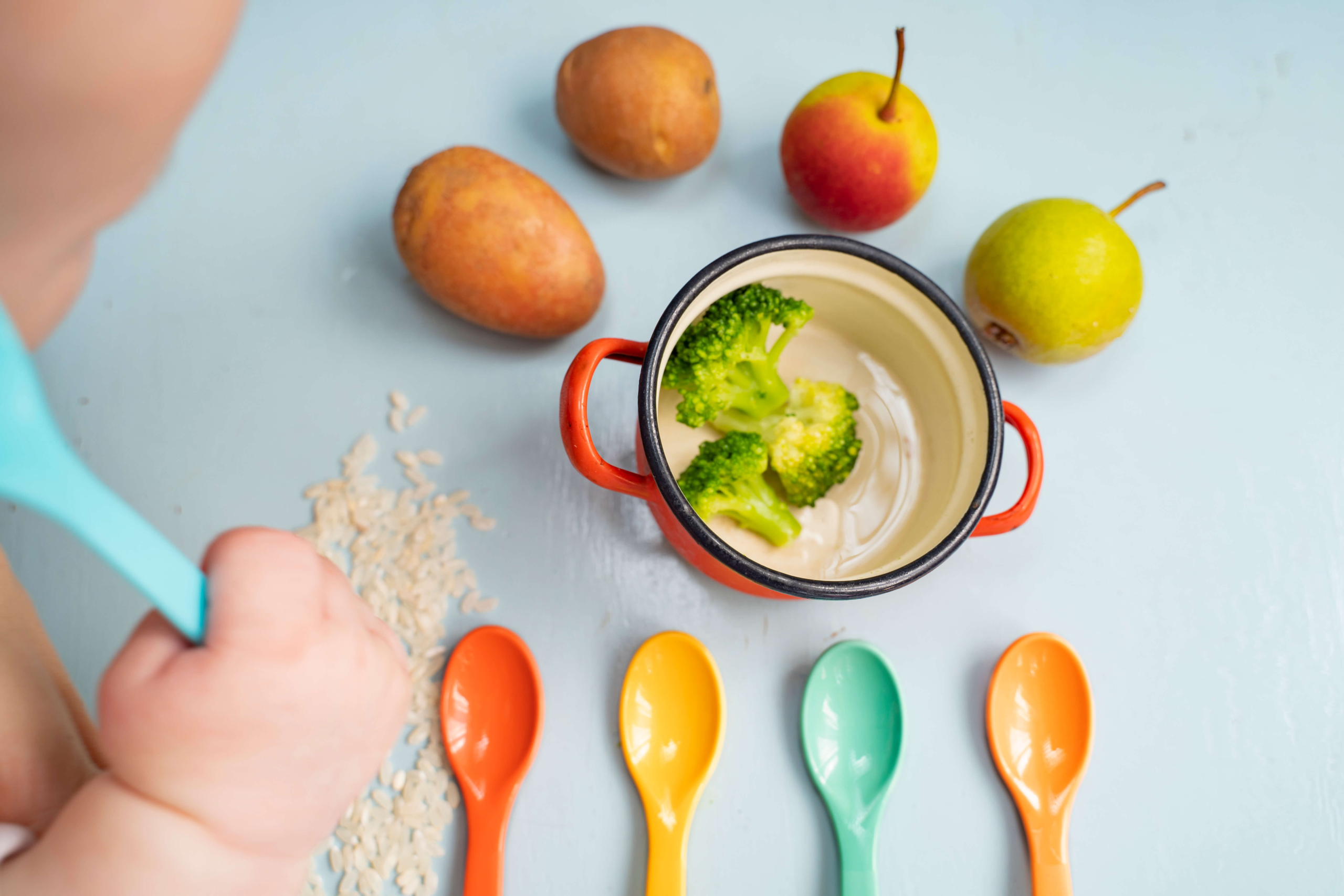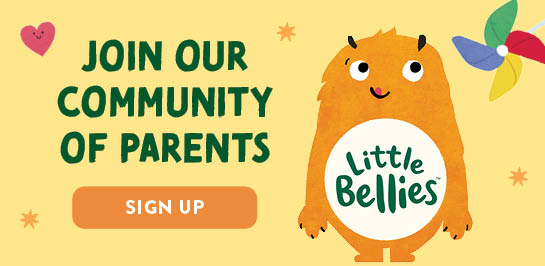Baby Led Weaning – Tips for New Parents
Reading time:
Reading time:

Are you interested in starting Baby Led Weaning (BLW) with your baby? BLW is an infant feeding method of starting solids that involves baby self-feeding rather than the parent spoon-feeding them. Additionally, finger foods are often offered from the get-go rather than starting with purees.
There are several goals and benefits of BLW. Self-feeding early on promotes the development of fine motor skills such as picking up foods and bringing them to mouth. Baby’s oral motor skills (lip closure, chewing, swallowing) present around 6 months of age allow them to learn to eat these foods safely. A huge benefit of BLW from a family point of view is the ability to offer family foods early on. Not only can this cut down on the grocery bill, but it allows the sharing of flavours and culture right away. Offering family foods can also increase the diversity of your baby’s diet which in turn provides a wider range of nutrients for their growing bodies.
Before you get started, learning when your baby is actually ready to start baby-led weaning is crucial. Signs of readiness most often occur around 6 months of age and include:
Because BLW most often includes the introduction of soft finger foods, it is important to know the difference between gagging and choking. Gagging is common and normal in the beginning stages of feeding babies. Gagging is an internal safety mechanism that can help to prevent choking. Gagging is often loud and dramatic with the baby often becoming red-faced. Avoiding intervening and allowing the baby to try to work it out is best. Avoiding trying to scoop food out of their mouth during a gagging episode is recommended as this can unintentionally push the food farther back and result in choking. Instead, offering a sip of water can help to maneuver the food better and swallow or spit out the food.
Opposite to gagging, choking is an emergency. Choking is not normal or to be expected with feeding. Unlike gagging, choking is silent as the food is blocking the airway. Baby may appear stunned and blueish. Learning how to handle a choking scenario and infant CPR through a certified program are the best ways to prepare yourself for an emergency.
Foods prepared for baby should be soft and squishable. This makes them safe to eat and not a choking hazard, and soft foods also make them, well, eatable! If foods are too hard, baby may suck on them and spit out whereas with soft foods baby can chew and swallow them. A good rule of thumb for softness level is to use the “pinch test” – if you can easily squish the food between your thumb and first finger, it is soft enough and safe to offer. If the food is still too hard, cook it a bit longer and/or allow it to ripen further before offering it.
Meltable solids fall outside of the pinch test and are safe to feed baby. These include items like meltable teething sticks and puffs. They are hard when held but once in contact with saliva or liquid will begin to quickly dissolve.
Between about 6-8 months, babies are primarily using palmar grasp which involves grabbing items with their whole hand. Think about the way we grab our toothbrush. Cutting foods into stick shapes or wedges helps baby to be able to pick them up, bite, and eat. Baby begins to gradually develop a pincer grasp where they can pick up items with their thumb and first finger. This is usually mastered by 9-10 months old. When you begin to see the baby start to try to pick up smaller pieces, you can offer some chopped soft foods at mealtime.
What items do you need to start BLW? There are loads of products on the market for BLW but only a few are really needed. The most important item to have is a supportive highchair – not all highchairs are created equal! The ideal highchair will allow baby to sit upright with their knees bent at a ninety-degree angle. A highchair with an adjustable footrest helps to improve the comfort of the chair as well as core stability. Imagine sitting on a chair or barstool where there isn’t a highchair – we feel unstable with our feet moving around, right? This is the same for baby without a place to rest their feet.
Self-feeding utensils can make offering a wide range of foods much easier. Spoons can be loaded with food and handed to babies to feed themselves. Having at least 2-3 spoons is ideal in case the baby drops or doesn’t want to hand back a spoon. There are many options for types of spoons including those made of metal, silicone, bamboo, and others.
At the time of starting solids, 1 to 2 ounces (30 to 60 mL) of water can begin to be offered as meals. Having a small cup for the baby to hold and drink from is ideal. While baby cups are available, other options include medicine cups and plastic shot glasses which are the perfect size for their tiny hands.
Outside of the above, the other feeding items are up to you! Use what you have and purchase additional items as you feel are needed – it may be surprisingly less than you would anticipate!
You are ready to get started! When beginning with BLW, start with one meal per day (trust me, it’s plenty!). Plan to offer their meal around 30-60 minutes after breastfeeding or bottle feeding to ensure they aren’t too hungry at the meal as this can cause frustration. Offer anywhere from one to three different finger foods at their meal (discuss food introduction with your paediatrician). An example meal may look like a slice of avocado, a wedge of ripe peach, and a chip-sized floret of steamed broccoli. Begin with just a small amount of food at once. As they eat the food, refill their tray until they show signs of being done with the meal. Most importantly, have fun at the meal and enjoy this new experience with your little one!
Author: Nicole Lattanzio, RDN, CSP, IBCLC @infant.nutritionist
Owner, The Baby Dietitian PLLC

Let’s Make It Official
Get the latest news on parenting tips, food play hacks, promotions and giveaways!
Subscribe Now